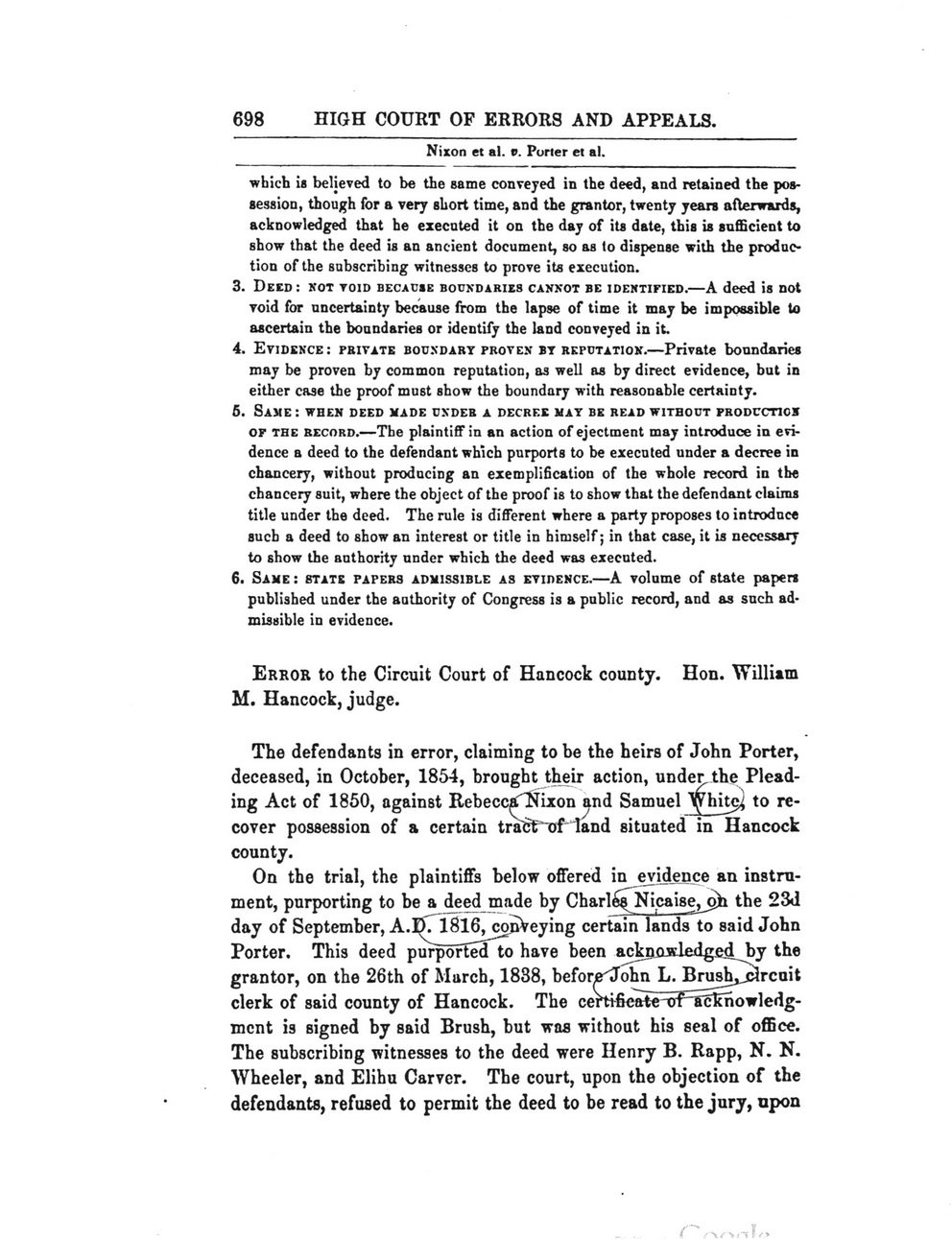This text was obtained via automated optical character recognition.
It has not been edited and may therefore contain several errors.
698 HIGH COURT OF ERRORS AND APPEALS. Nixon et al. v. Porter et al. which is believed to be the same conveyed in the deed, and retained the possession, though for a very short time, and the grantor, twenty years afterwards, acknowledged that he executed it on the day of its date, this is sufficient to show that the deed is an ancient document, so as to dispense with the production of the subscribing witnesses to prove its execution. 3. Deed : not void became boundaries cannot be identified.?A deed is not void for uncertainty because from the lapse of time it may be impossible to ascertain the boundaries or identify the land conveyed in it. 4. Evidence: private boundary pkoven bt reputation.?Private boundaries may be proven by common reputation, as well as by direct evidence, but in either case the proof must Bhow the boundary with reasonable certainty. 5. Same : when deed made under a decree mat be read without production of the record.?The plaintiff in an action of ejectment may introduce in evidence a deed to the defendant which purports to be executed under a decree in chancery, without producing an exemplification of the whole record in the chancery suit, where the object of the proof is to show that the defendant claims title under the deed. The rule is different where a party proposes to introduce such a deed to show an interest or title in himself; in that case, it is necessary to show the authority under which the deed was executed. 6. Same : state papers admissible as evidence.?A volume of state papers published under the authority of Congress is a public record, and as such admissible in evidence. Error to the Circuit Court of Hancock county. Hon. William M. Hancock, judge. The defendants in error, claiming to be the heirs of John Porter, deceased, in October, 1854, brought their action, under the Pleading Act of 1850, against Rebecctf"Nixon and Samuel y hit^ to recover possession of a certain tra6t??of'iand situated in Hancock county. On the trial, the plaintiffs below offered in evidence an instrument, purporting to be a deed made by Charl^ Nicaise^jjh the 23d day of September, A.^T l8l6^conVeying certain lands to said John Porter. This deed purported to have been acknxusledgedby the grantor, on the 26th of March, 1838, befor(er^Tohn L. Brush^clrcuit clerk of said county of Hancock. The cemfiea^e^f^silcnowledg-mcnt is signed by said Brush, but was without his seal of office. The subscribing witnesses to the deed were Henry B. Rapp, N. N. Wheeler, and Elihu Carver. The court, upon the objection of the defendants, refused to permit the deed to be read to the jury, upon

Brush, John 002